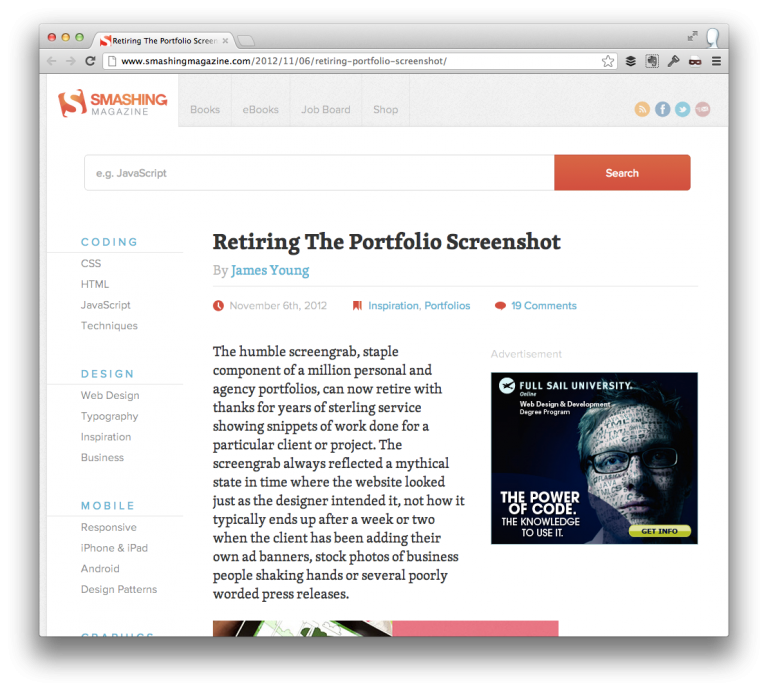For as long as I’ve been on the Internet (well, the Internet as my generation knows it ;), developers and designers have usually maintained some type of display of their work and it’s generally consisted of a listing of projects that they’ve completed with outbound links to said project.
I’ve toyed with the idea of going into detail as to how I’ve built certain projects – you can see this in posts such as how I built Category Sticky Post and Tag Sticky Post – but I’ve never gone all in as I’ve never sold on if it was of any interest to others.
But yesterday, Smashing Magazine ran a bit of a motivational post on Retiring The Portfolio Screenshot and focusing more on “case study” type posts.
This got me thinking about beginning to introduce a case study on WordPress projects.
Retiring The Portfolio Screenshot

I highly recommend reading the article in full, but I wanted to capture a few of the key points here in order to give some context in what I’m planning to do moving forward with my own work:
- “Opting for a more detailed approach to displaying your work opens the door to a more creative approach to your portfolio.”
- “Many clients these days are showing an active desire to actually share more resources, processes and code.”
- “Next time you’re adding a project to your portfolio, perhaps consider writing it up in a bit more detail and turning it into a case study.”
Interesting points, right? So here’s where I’m planning to take all of this.
WordPress Case Study: How Projects Are Built
Obviously, I’ve done a few of these types of posts already:
- Building Category Stick Post and Tag Sticky Post
- Building Single Post Message
- Building Comment Images
Initially, I wrote these posts as a way to share a little bit of my approach to creating some of the smaller plugins, but I’ve never done any in-depth posts on contract jobs or on some of the work done at 8BIT and I’d like to change that.
I’d love to begin introducing a new type of post where I share case studies based on the work that I’ve released (contract-permitting). Each of these types of post will include the following content:
- Vision and goal of the project
- How requirements were gathered and scoped
- Planning the architecture of the project
- Planning the design of the project
- Preliminary screenshots, sketches, mocks, diagrams, and/or designs
- Development-based challenges including anything from writing code to capturing and squashing bugs
- Final version information and where you can find the live version of the product
Ultimately, I hope to have a consistent outline – perhaps even a template – that makes drafting these posts even easier. Obviously, they have potential to be quite long.
Is it worth it?
I think that sharing your thought process online is productive if for no other reason than documenting your work, but what’s to motivate me to publish it online instead of writing it down in a personal notebook?
Sure, I always enjoy seeing what others have had to say, learning from their mistakes and successes, and trying out new approaches and/or techniques, but I also know that some of my posts that provide insight on how I approached a given project have had the lowest engagement with only a fair amount of traffic.
So I’m wondering if these types of posts are of interest to others? In the comments, let me know your thoughts. Additionally, I’d love to know what you guys look for in a case study on WordPress projects and if you plan on doing the same.
I think it’d be neat to have as many developers as possible sharing their process and their final work especially in the WordPress space.


Leave a Reply
You must be logged in to post a comment.